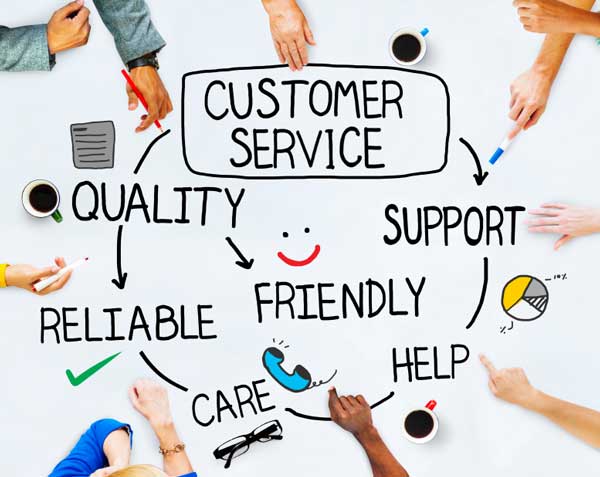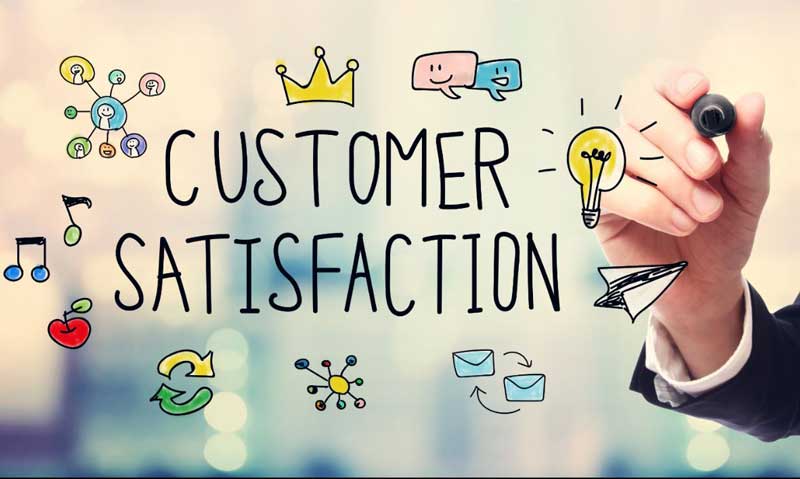
By Crystal C.
What is Customer Experience (CX)?
In simplest terms, it is how your customers perceive and emotionally feel about their overall experience with your business before, during and after their transaction with you. Per OMB mandate, Circular A-11, Section 280, the government defines it as “a combination of factors that result from touchpoints between an individual, business, or organization. These factors include ease/simplicity, efficiency/speed, and equity/transparency of the process, effectiveness/quality of the service itself, and the helpfulness of service delivery employees.” The purpose of CX is to increase customer satisfaction and loyalty via enhanced service delivery.

Every element of the customer journey ties into the final customer experience
OMB Mandate
The private and government sectors are quickly adopting this framework. OMB mandate (Circular A-11) requires that High Impact Service Providers (HISPs) develop, implement, measure and report out on their Customer Experience Program. HISP are agencies that have a high volume of customer facing transactions. For example: DOS-Passport Services, DHS-Airport Security Checkpoints, and DOT-Taxpayer Services, to name a few. This guidance is expected to establish a CX-mindful culture, provide structure and consistency, identify accountability and governance, and ensure high-impact agencies are maturing through government-wide comparative assessments.
Developing the CX Charter
The steps our CX team are taking to create our official CX charter include:
- Create a clear customer experience CX vision
- Build the Governance for decision making and cross functional committees
- Activate the Roadmap, execute initial CX steps
- Develop CX measurements and capture customer feedback via feedback loops, act and communicate
- Develop CX Change management and core principals; communicate and empower change agents and front-line management

ActioNet has begun developing a CX Charter as a framework for our ACX initiative
ActioNet Customer Experience (ACX)
ActioNet has also introduced CX to our customers to improve service delivery. For example, we recently introduced and implemented a Customer Experience initiative. Working closely with our federal counterparts, we implemented a plan, targeted areas to focus on, and baselines. Ultimately, we tracked and reported out on progress. This resulted in increased survey return rates, increased customer satisfaction, improved processes, reduced ticket backlogs, improved employee morale, and faster resolution times for service restoration.
To implement CX, there are several templates and tools that can be used to get started. Such tools include Journey Mappings, Personas, Storytelling Canvas, and more. These tools help you to look at where you are, where you want to go, the personas of your customers, and evaluate touchpoints the customer has with your business. All of these tools help you truly understand your customer’s perspective in order to make improvements. Implementing CX is not a one-time process. It is iterative and becomes a culture within your organization.
How does this relate to you? Your agency may be required to implement CX, and therefore you may be answering data calls or improving processes to support their initiatives; or you may consider adding value to your programs by implementing CX.
To learn more about Customer Experience, you can receive training and ultimately a certification. Recently, several ActioNeters took the Forrester training and certification. Some members of this team are actively involved in enhancing our ActioNet Customer Experience (ACX) program to improve the employee experience, and ultimately drive improved service delivery to our Federal clients and internal customers. Transformation starts with ourselves, and ActioNet has defined, built and adopted a CX culture that yields results.
